- Home
- Adam Roberts
Doctor Whom or ET Shoots and Leaves: The Zero Tolerance Approach to Parodication
Doctor Whom or ET Shoots and Leaves: The Zero Tolerance Approach to Parodication Read online
Table of Contents
Title Page
Copyright Page
Chapter Twelve - THE END
Chapter Two - THE DIMENSIONS OF THE TARDY
Chapter One - THE INTERVIEW
Chapter Four - THE DOOM OF THE ICETANIC
PROLOGUE
Chapter Seven - THE DR RE-UN-DEGENERATES
Chapter Three - THE TIME GENTLEMEN’S CONVENANCE
Chapter Six - THE SLUTTYTEENS
Chapter Nine - BETRAYAL !
Chapter Five - THE NEAR MAGICAL DISAPPEARANCE OF THE WATER INTO THE TARDY TOWELS
Chapter Eight - THE DOOM OF THE HELL-MET WOMAN
Chapter Ten - THE GENESIS, DEUTERONOMY AND BOOK OF TOBIT OF THE GARLEKS
Chapter Eleven - ‘MEET ME— ET!
SPECIAL OFFER! SPECIAL OFFER! SPECIAL OFFER!
THE MONSTERS OF DR WHOM
Also by A R R R Roberts from Gollancz:
The Soddit
The Sellamillion
The McAtrix Derided
Star Warped
The Va Dinci Cod
Doctor Whom
ADAM ROBERTS
www.orionbooks.co.uk
Copyright © A. R. R. R. Roberts 2006
All rights reserved
The right of A. R. R. R. Roberts to be identified as the
author of this work has been asserted by him in accordance
with the Copyright, Designs and Patents Act 1988.
First published in Great Britain in 2006 by
Gollancz
An imprint of the Orion Publishing Group
Orion House, 5 Upper St Martin’s Lane,
London WC2H 9EA
This edition published in Great Britain
in 2007 by Gollancz
1 3 5 7 9 10 8 6 4 2
A CIP catalogue record for this book
is available from the British Library
ISBN 978 0 5750 8577 0
Typeset by Input Data Services Ltd, Bridgwater, Somerset
Printed in Great Britain at Mackays of Chatham plc,
Chatham, Kent
The Orion Publishing Group’s policy is to use papers that
are natural, renewable and recyclable products and made
from wood grown in sustainable forests. The logging and
manufacturing processes are expected to conform to the
environmental regulations of the country of origin.
www.orionbooks.co.uk
PREAMBLE
The extraterrestrial pointed his oddly-shaped weapon at the Dr. ‘This is the end,’ he said. ‘This is goodbye forever, Doctor! No longer shall your kind oppress the Galaxy with your terrible grammatical correctitude—’
‘—ness,’ corrected the Dr, in a small voice. Even though he had his arms up, and a gun pressed against his chest, he couldn’t help it.
‘You die now!’ screeched the infuriated ET.
‘Don’t be so sure!’ said the Dr, defiantly. ‘You’ll find I’m harder to kill than you might assume . . .’
‘Not this time, Doctor. Do you see what I’m holding in my hand? It’s a TGV. Oh yes.’
‘No!’ gasped the Dr, his face paling. By which I mean, becoming more like a paling. You know: thinning, and acquiring the metallic sheen of terror. ‘A Time Gentleman Violator? But those weapons are outlawed by the convention of—’
‘Outlawed, yes,’ agreed the ET. ‘Despised and condemned by all civilised people in the Galaxy. And why? Because they are deadly to Time Gentlemen! The only weapon that bypasses your infuriating ability to re-un-degenerate yourselves at the moment of death!’ The ET laughed. It would be a cliché to say he laughed maniacally. A cliché, but nevertheless true. He laughed like a maniac; a little green spacealien maniac. His laughter was mainy. Maniac-like. Manicalesque. Then he spoke: ‘Oh the adventures I had! The money I have spent! The crosses I have doubled! And all to obtain this little weapon - and to arrange matters such that I could be here, now, able to point it at you, Doctor, and pull—this—trigger.’
‘I still don’t see,’ said the Dr, ‘how you were able to trace me here?’
‘You don’t see?’ said the ET. ‘Why, you have a traitor aboard your TARDY, dear Doctor! One of your companions has betrayed you!’
‘No!’ the Dr gasped, spinning about to stare at the two of us. ‘One of you two? But I trusted you! I showed you the galaxy! And you betrayed me . . .?’
We were too shocked to reply.
‘Only one of them betrayed you, Doctor,’ said the ET. ‘Now I could tell you which one . . . but, you know what? I think I prefer to kill you without letting you know! I like the idea of you going to your ultimate death with that little irritant nagging in your brain.’
‘Wait—’ the Dr cried, starting forward, his hands raised before him. ‘You mustn’t—you couldn’t—you daren’t—’
The ET pressed the muzzle of his weapon close up against the Dr’s chest, so as to be quite sure there was no chance of the shot going wide.
He pulled the trigger and the hideous weapon discharged. Its explosive bolt of time-energy crashed catastrophically into the Dr’s torso.
‘You dared!’ the Dr gasped, staggered back. ‘You could!’
‘I musted,’ said the ET, triumphfully. ‘I did must.’
‘I’m dying,’ the Dr rasped. ‘Quick . . . loosen my tie . . .’
‘No!’ cried Linn, rushing to the supine form of the Dr. ‘It cannot be!’
‘It can, it are,’ said the ET. ‘And now, after I am shot you in the body, I shall be off. The blow has been struck! We can stick our temporal apostrophes - or indeed, apostrophe’s - where-ever the Punc we like! The tyranny of grammar is at an end! I is leaving.’ And so the ET, having fatally injured the Dr, walked back to his unconventionally shaped time-and-space ship, stepped inside and closed the door behind itself. A moment later the craft shimmered and faded from existence.
And we were stranded with a dead Dr.
Behind us, in the recesses of the room, strange monstrous forms of life writhed and seethed in their green-lit tanks.
Well.
Or maybe it didn’t happen quite like that. But I think I’ve captured the gist of it.
Oh, I’m sorry? Did you want more than the gist?
Chapter Twelve
THE END
‘Well,’ said the Dr, standing at the control panel. ‘Everything seems to have worked out alright in the end. Again!’
I snuggled into the arms of my new love; and she snuggled into mine. Not to put too fine a point on it, we snuggled into one another’s arms. It was snug. ‘I never thought I’d see this day, Doctor,’ I said. ‘I truly believed that my happiness boat had sailed. That my happiness rocket had blasted off into orbit without me in the cockpit. That the happiness tortoise has crawled off just out of my reach.’
‘Can I drop you two lovebirds anywhere?’ the Dr asked. ‘It’s on my way.’
‘How do you know it’s on your way,’ my beautiful partner asked, from the cradle of my arms, ‘if you don’t know where we want to go?’
‘Everywhere’s on my way,’ said the Dr. ‘That’s the beauty of a craft like the TARDY.’
‘It almost feels,’ I said, ‘too good to be true! It’s almost as if it’s too good for me to believe it.’
‘Tush,’ said the Dr. ‘Don’t say that.’
Oh it seemed like the happiest of happy endings! But in my heart, inside that heart, in the heart inside my heart, I knew that it wasn’t. I knew that it was something the reverse. ‘There�
��s the outstanding matter of the hydrogen atom . . .’ I said, prompted by my nagging conscience.
‘The hydrogen atom,’ repeated the Dr nodding sagely.
‘The hydrogen atom?’ asked my love. ‘Singular case?’
‘Yes. There’s only one, apparently,’ I said.
‘Well, we’ll cross that bridge when we get to it,’ said the Dr. ‘Don’t worry about it. As we stand, we’ve ridden the cosmos of an unspeakable evil. We’ve sorted out your love life. We’ve averted what seemed like inevitable destruction. I think we can afford to cut ourselves a little slack.’
‘Take us to the star Thpops,’ I said; ‘and the world Tapov, where the dancing never ends. Take us both there so that we can get on with the rest of our lives!’
The Dr touched the panel. ‘With the greatest of pleasure. ’
And so we hurtled through time and space. But like I said; appearances can be deceptive, and a happy ending need not, perhaps, be so happy as all that.
Chapter Two
THE DIMENSIONS OF THE TARDY
The TARDYis bigger on the inside than on the out. That is, of course, the fact that anybody who has seen the Dr’s craft remembers about it. But few people think through the implications of this state of affairs.
For example: toilets. The smallest room in a TARDY is actually, of course, the biggest room. Going to the loo involves sitting on a porcelain pan in the middle of an empty aircraft hangar. Breezes moan and whisper in the rafters. The toilet paper chitters and flaps in the holder at your side. It is intensely cold.
Very hard to concentrate on the job in hand, I can tell you.
The converse is also true. The engine-room of the TARDY contains Matter-Dolorosa Spacetime Converter Generators, vast machines that wrench the very sub-material of space and time about itself, plaiting great ropes of superstring into cat’s-cradles shapes. These are the largest and most powerful motors in the cosmos.
The engine room is the size and shape of a small cigar box.
The TARDY was designed with enormous cargo-holds, such that the Dr could transport millions of metric tonnes of cargo from world to world, should he need so to do. But, although the design was faithfully followed the fact remains that, stepping through the door of the device, you discover that the cargo holds on the inside are the exact size and dimensions of the ashtray on the Ford Cortina Mark III.
The control room presented a similar dilemma. It was designed to be spacious, with a large viewscreen and many padded and swivelly chairs, arranged carefully on a split-level effect, with various complicated-looking consoles and podiums between them. But when he took possession of his craft the Dr discovered that the bridge was the size of a glove-compartment. Luckily the design for the bridge had also included a glove compartment, which (stepping inside the TARDY) turned out to be the size of a middle-sized TV studio. The Dr had cleared it out: throwing away the half-eaten packet of Werther’s Originals, the single left-hand glove, a one-inch-to-alight-year galactic road atlas with the cover missing and the page for ‘Earth’s solar system’ all creased and scuffy, the half a dozen paperclips and the old biro with the ink clotted at the wrong end. He had then been able to reroute the control surfaces to a panel in the new room. He took to calling this space ‘the bridge’, but it was really the glove-compartment.
But this peculiar disrelation between inside and outside was not the only strange feature of the TARDY.
One feature of the machine was that it possessed a capability to disguise itself automatically. Unfortunately this ‘Disguise Mutation Chip’ functioned perfectly. This was a terrible shame. It would have been much better had it broken down, or malfunctioned in some way. But we had no such luck.
You see, the Dr’s TARDY took the shape of a police phone box. That was its disguise, which enabled it to blend in on any world. All Time Gentlemen were given TARDIES, and all of them were configured with some sort of police-based disguise chip, because every civilisation in the galaxy has a police force. But I have to say, if I’d been the Dr, taking charge of my TARDY for the first time, I would have flipped open the panel in the central control module and I would have smashed the Disguise Mutation Chip with the heel of my fancy boot. Or with a hammer. Or the head of my nearest assistant. Anything to hand.
Do you ask why? I’ll tell you why.
The Disguise Mutation Chip automatically changed the outward appearance of the TARDY to blend in with its environment. Imagine a different TARDY, one operated by a notional Time Gentleman, and programmed to look like a police car. It might land in London in the 1960s as a panda car; and in London in the 2960s as a Police All Nodes Driving AcceleraTron. Blending-in, you see.
All well and good - if your TARDY is configured to look like a police car. Or a police station. But the Dr’s TARDY took the shape of a police phone box. It was a nightmare.
Oh, if we landed in the London of the late 1950s then things were fine. We would materialise ourselves on the corner of a foggy street looking exactly like a tall blue cubicle with POLICE at the top. Well and dandy. But let’s say we were happened to materialise in London in - let’s say, for the sake of argument - 2010. Nobody used phone boxes in that time-period any more, of course; mobile phone technology had rendered them obsolete. To blend in, the TARDY’s software would automatically give us the appearance of a small Nokia seven-three-fourteen, the one with the blue screen and caller ident, the size of a small pack of cards.
Have you ever tried to clamber out of a small mobile phone? Of course you haven’t. That’s a stupid question. Well, I have: and let me tell you: even with the flip-back top it is very far from being easy.
Once the Dr landed the TARDY on a planet in the Nibbler Nebula, a place where the local inhabitants had not advanced beyond the equivalent of our stone age. Their rudimentary police force communicated amongst itself by yelling. Accordingly our Disguise Mutation Chip manifested us as a six-foot shouty man. We had to climb out through his mouth - awkward. And messy too. I came out first, squeezing myself up the gullet and past the big rubbery tongue and slobbery lips: I fell six feet to the stony soil, bruising my shoulder. I picked myself up and did my best to wipe the saliva from my face and body, as Linn followed, and finally the Dr himself. After a great deal of effort, and a good deal of saying yuk and euw we were all outside, and about to leave, when the Dr cursed. ‘I have forgotten my Moronic Screwdriver! Left it inside the TARDY!’
Linn and I both stared at one another. For several minutes nothing happened, except for the moaning of a vast and distant wind dragging itself across the horizon-spanning stony desert.
‘Well,’ I prompted. ‘Do you want to pop back inside and get it?’
The Dr looked at the TARDY. Its Disguise Mutation Chip had given it the look of a man not unlike a young Brian Blessed. The door was still open. The Dr looked at me. ‘You don’t fancy just, er, popping back inside for me, do you?’
‘Not I,’ I said.
‘Well,’ said the Dr, putting his hand on the TARDY’S chin and snapping it upwards to shut the door. ‘I don’t suppose we’ll need it.’
And so we went off without the Moronic Screwdriver. It was alright in the end, because we didn’t need it; but you take my point. It’s not convenient.
On another occasion we landed in eighteenth-century England, and the TARDY took the form of a large semaphore flag: oak pole and a red-triangular pennant. On the distant World of Racrd it took the form of a carrier pigeon. On more than one occasion (I repeat, for the record: on more than one occasion) we landed in cultures so technologically sophisticated that police communication was affected by microscopic nano-technological prostheses. On these occasions the Dr would open the TARDY door from the inside just fine; but the attempt to step through, or even to put one’s little finger through, proved perfectly impossible.
‘Righty-tighty,’ the Dr would say, on these occasions. ‘Well, I didn’t really want to visit this world and this timeframe anyway.’ And he’d fiddle with the control knobs and away we’d go
.
There were whole swathes of space and time we never visited.
Chapter One
THE INTERVIEW
The Dr (the advertisement said) happened to be in my area and was recruiting. I went through his usual channels, and was given a time for my interview.
This took place in a spaceship, a marvellous device. It was called the TARDY, because its temporal engines slip it out of synch with Standard Time, disengaging itself, becoming in a sense cosmically delayed. It flips back along the temporal dimension (if the destination is in the future, then the TARDY loops right the way round the whole of spacetime, over the top and back in. It takes less time than you might think).
I stepped through the door. The Dr and a young woman were sitting behind a table. It was one of those tables with fold-out metal tubing for legs.
The Dr was dressed in a strange collection of velvet jacket, moleskin trousers, black winklepinker boots, a waistcoat, a silk tie with the design of a rectangular blue grid upon it. He had a big woolly scarf, and was wearing a leather overjacket. He looked a power of odd, to be honest. The young lady was dressed more soberly. And attractively.
‘Hello,’ said the Dr, peering at his notes and not looking at me. ‘Please take a seat.’ There was a rather rickety-looking chair sitting in the middle of the room: four aluminium poles, a small square of red plastic upholstery and a scuffed oval-shaped seat. I sat on this gingerly.
The woman smiled at me, which I took to be an encouraging sign. The Dr, however, seemed to be spending an awfully long time going through my résumé.
‘Right,’ he said, eventually. Finally he looked up and met my eye. ‘I am the Dr and this is Linnaeus Trout. Named for the great Linnaeus, who did such sterling work establishing categories, rules and restrictive definitions.’
This meant nothing to me. ‘Right,’ I said, a little nervously.

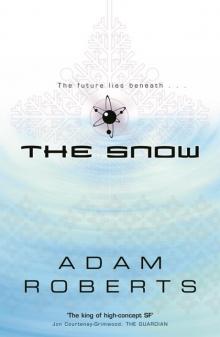 The Snow
The Snow Polystom (Gollancz Sf S.)
Polystom (Gollancz Sf S.) The Parodies Collection
The Parodies Collection The Man Who Would Be Kling
The Man Who Would Be Kling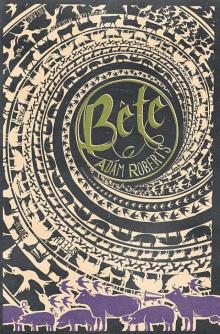 Bête
Bête The Lake Boy
The Lake Boy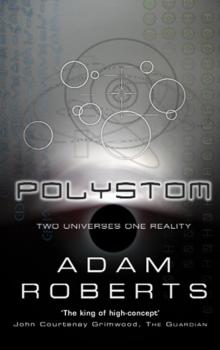 Polystom
Polystom Swiftly: A Novel (GollanczF.)
Swiftly: A Novel (GollanczF.)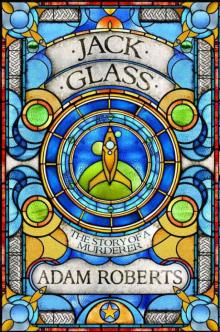 Jack Glass
Jack Glass Haven
Haven The Riddles of The Hobbit
The Riddles of The Hobbit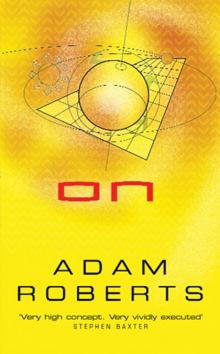 On
On The Wonga Coup
The Wonga Coup The Thing Itself
The Thing Itself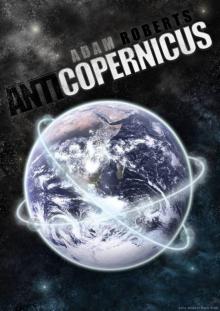 Anticopernicus
Anticopernicus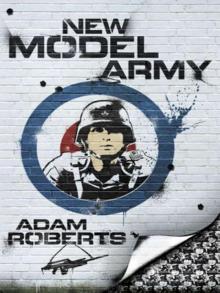 New Model Army
New Model Army Doctor Whom or ET Shoots and Leaves: The Zero Tolerance Approach to Parodication
Doctor Whom or ET Shoots and Leaves: The Zero Tolerance Approach to Parodication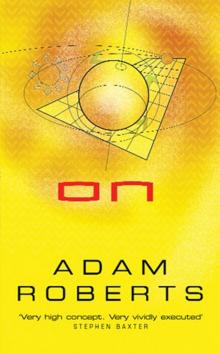 On (GollanczF.)
On (GollanczF.)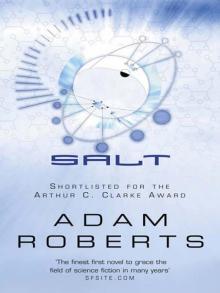 Salt
Salt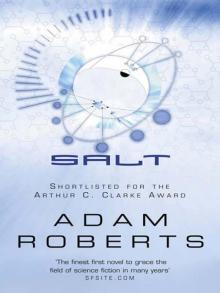 Salt (GollanczF.)
Salt (GollanczF.) By Light Alone
By Light Alone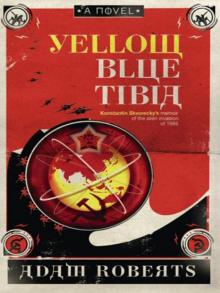 Yellow Blue Tibia
Yellow Blue Tibia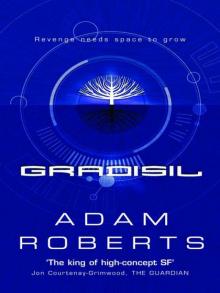 Gradisil (GollanczF.)
Gradisil (GollanczF.) Land Of The Headless (GollanczF.)
Land Of The Headless (GollanczF.) Adam Robots: Short Stories
Adam Robots: Short Stories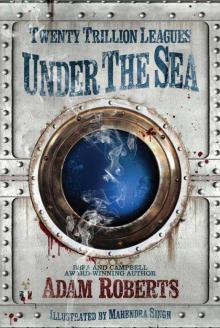 Twenty Trillion Leagues Under the Sea
Twenty Trillion Leagues Under the Sea